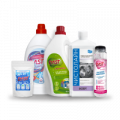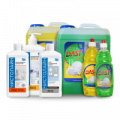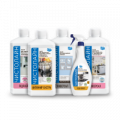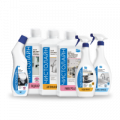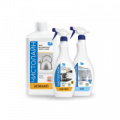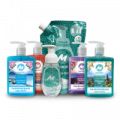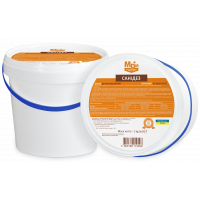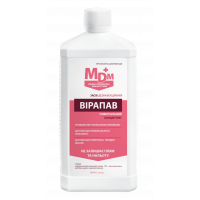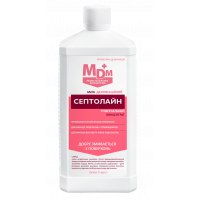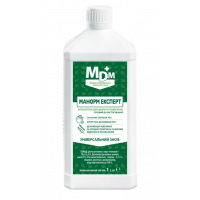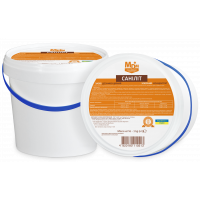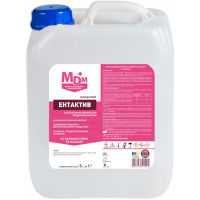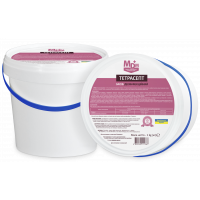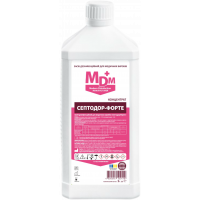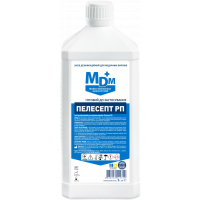Disinfection in meat processing plants: what to use?
Meat processing plants require a special approach to sanitary treatment. This is not surprising, as their operations are subject to high hygiene and product safety standards. Properly organized sanitation of production areas, equipment, and utensils helps minimize the risks of product contamination (infection) by pathogenic microorganisms. Therefore, the selection of disinfectants for such facilities must be approached with particular care. Let’s take a closer look at what the sanitation of production areas should entail and which disinfectants can be used for this purpose.
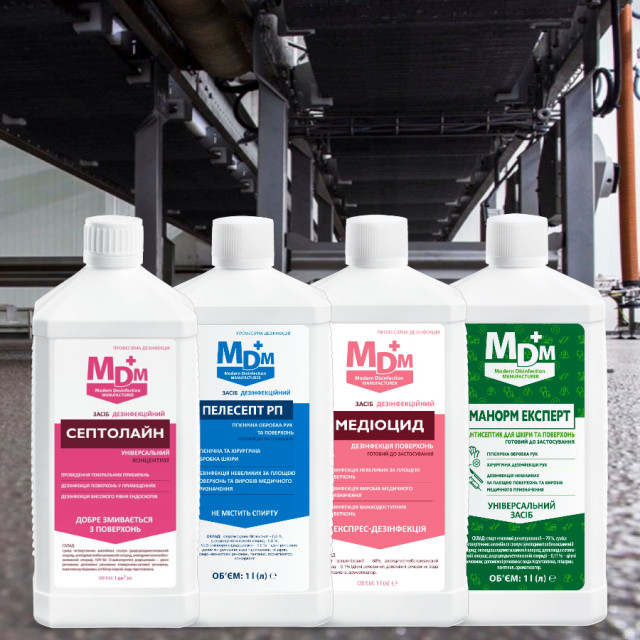
Content
MAIN STAGES OF DISINFECTION
To ensure cleanliness at the facility, the disinfection process should be carried out in a specific order, which includes:
- Cleaning surfaces of contaminants;
- Rinsing with water to remove product residues;
- Applying cleaning agents for deep cleaning;
- Using disinfectants tailored to the meat industry requirements;
- Rinsing treated surfaces to remove disinfectant residues.
The list of actions may vary depending on the characteristics of the object being treated. In some cases, cleaning and disinfection may be combined.
REQUIREMENTS FOR DISINFECTANTS
The choice of disinfectants depends on the type of surface, the level of contamination, and the specific needs of the facility. The requirements for disinfectants in the meat industry include:
- High effectiveness against bacteria, viruses, and fungi;
- Safety for equipment, ensuring no corrosion;
- Quick action (short exposure time for disinfectant solutions);
- No residual odors or toxic components.
For treatment, disinfectants containing chlorine or quaternary ammonium compounds (QACs) are recommended. Additionally, disinfecting work surfaces and sanitizing equipment can be carried out using complex disinfectant products.
DISINFECTION OF PRODUCTION ROOMS AND EQUIPMENT: WORK REGULATIONS
The procedure for each area of the facility is regulated by the sanitation instructions for the rooms. Special attention should be given to:
- Sanitizing equipment and utensils, including cutting tables, knives, trays, and processing lines;
- Disinfecting work surfaces that come into contact with meat.
It is also necessary to keep a log of cleaning and disinfection of equipment and utensils, recording the disinfectants used, exposure times, and responsible personnel.
Cleaning tools such as brushes, mops, and buckets should be treated separately. Regular use of specialized disinfectants for cleaning tools and equipment is required to prevent cross-contamination.
RECOMMENDATIONS FOR ORGANIZING DISINFECTION
To ensure effective disinfection of production rooms, equipment, and work surfaces, it is essential to follow a number of recommendations:
- The selection of disinfectants should take into account the specifics of the facility and comply with the rules for using disinfectants;
- Equipment used for disinfection should be regularly checked: it must be functional and resistant to chemical effects;
- It is important to train staff in sanitation procedures, develop instructions, and monitor compliance with sanitary standards.A comprehensive approach will provide the desired result.
WHAT TO USE FOR DISINFECTION?
For meat processing facilities, the following disinfectants are suitable:
- Chlorine-based products (effective against most microorganisms). These can include Sanidez or Sanilit. To minimize toxicity, it is essential to strictly follow the solution concentration, exposure time, and thoroughly rinse off any residue with water after treatment. These products are effective but require strict safety precautions when used.
- QAC-based products for resistant bacteria. These may include Virapav, Sangezin, or Entactiv (listed in order of increasing active ingredient concentration).
- Complex products for deep disinfection. These are necessary for treating equipment and work areas, as well as for general disinfection and sanitizing food waste. They have the highest antimicrobial, antiviral, and antifungal activity, along with partial sporicidal properties. Products such as Septolain and Septamin are included in this category. For complete sterilization, glutaraldehyde-based products (e.g., Septodor Forte or Ecoment Forte), chlorine-based products, or Tetrascept are recommended.
- Express disinfectants. These are characterized by fast action and rapid evaporation. They are usually available in spray form. Alcohol-based products include Manorm Expert, Mediocide, while those based on chlorhexidine include Pelasept RP.
The effectiveness of each product depends on strictly adhering to the technology and exposure time.
Sanitary disinfection in meat processing plants requires a systematic approach. It is extremely important to choose high-quality disinfectants and use them in accordance with the instructions to ensure product safety and compliance with sanitary regulations.
